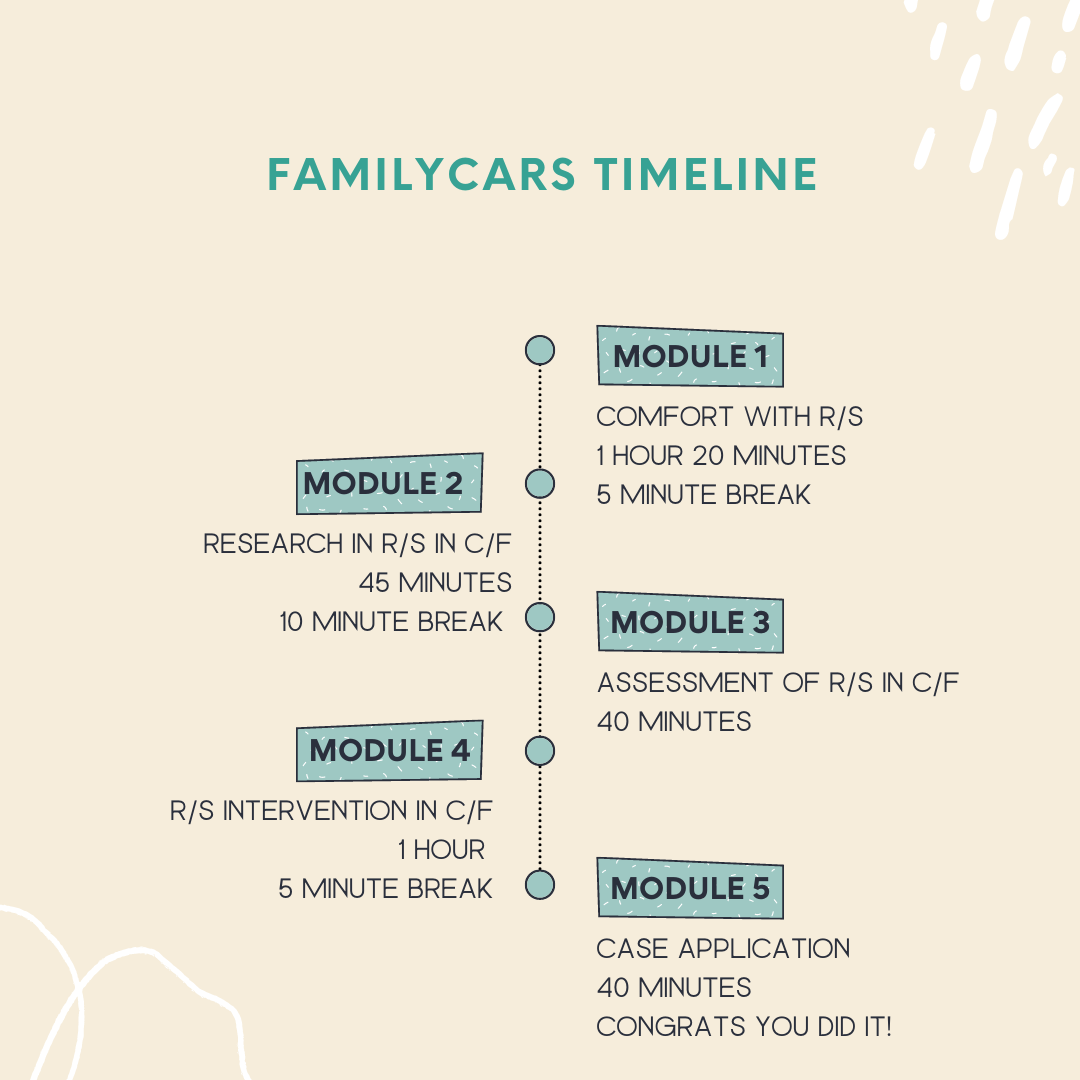
Step 1
Download the Group Family CARS workbook (full)
Individual-level Family CARS workbook
How to implement in a graduate classroom, or practica/internship site didactic training
Workbook and Videos for training
A suggested timeline for training
Evaluation methods

Download the Group Family CARS workbook (full)
Individual-level Family CARS workbook

Watch the Videos

Application to Cases

The workbook is evidence of engagement in the learning process. Students can turn in their workbook (or scan and upload it) for you to evaluate them. The link to download the workbook is above.
As part of our study we created a self-evaluation questionnaire. We also used Holly Oxhandler's self-evaluation questionnaire on Religious and Spiritual Competency generally. You can download those below.
We tested a rubric to evaluate student responses to case study scenarios. The rubric had great inter-rater reliability. So we offer it to you as course instructor. You can have students answer questions about the 5 case studies. They can self-evaluate, peer-evaluate or professor-evaluate them on the rubric.